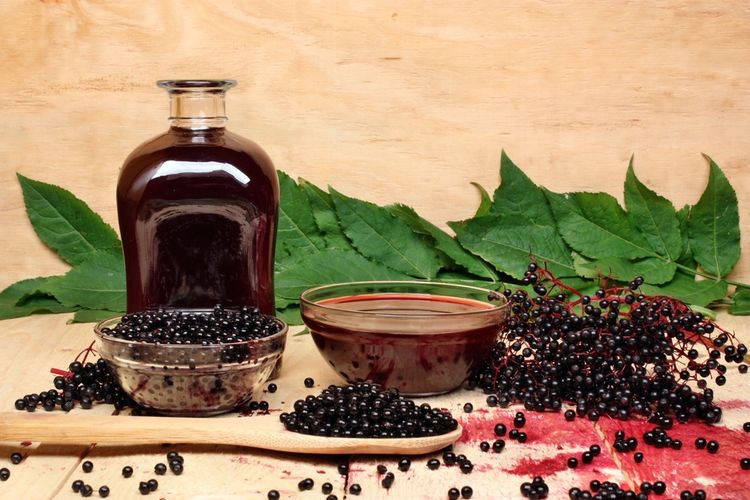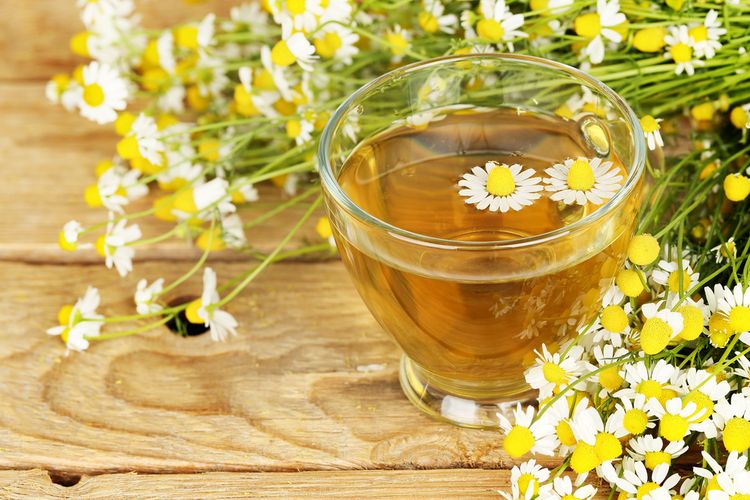5 Safe and Effective Herbs To Treat Common Kids’ Ailments

It’s no secret that life with kids can be a roller coaster ride. Throw a sick kid into the mix and you can be sure it’s going to be a very bumpy one. You want to do best by your children, especially when they’re suffering.
Trying to keep things “clean” with hand sanitizers, avoiding germs at all costs and pumping them with antibiotics has for some time seemed like the best approach, however, we’re beginning to understand how that approach can do more harm than good. We’ve begun to wake up from our germ-a-phobic ways to see the good side of bacteria.
When it comes to kids, even the “bad guys” might not be so bad. When kids get a bug, their immune system is learning how to fight and is getting stronger.
Imagine someone who was raised in an overprotective household, who was never allowed the opportunity to face any adversity. How would they fair when faced with the real world? There would probably be a lot of struggle and, because they are now an adult, a lot more on the line.
That’s essentially what we’re doing to our kids’ immune systems by obsessively avoiding germs or squashing them with antibiotics at first sight.
The truth is, while there’s a place for Western pharmaceuticals, they tend to be extremely harsh and can cause a slew of side effects. They may pass clinical trials, but it’s all too often that Western drugs fail the test of time, and sometimes with great consequence.
When it comes to treating your children, why take chances?
If you’re reading this article, chances are you’ve already figured most of this out. You try to avoid prescriptions and over-the-counter meds unless absolutely necessary, but you’re going to have a sick kid on your hands at some point.
There are safe and effective herbal alternatives that you can’t go wrong with. These safe, yet powerful plant medicines stand the test of time, and not only ease symptoms and fight infection, but fortify immunity.
Packed with healing plant chemicals and micronutrients, they’ll help make your little one feel better while simultaneously making them more resilient. Can Tylenol do that?

#1: Elderberry
Used traditionally in many parts of Europe, Elderberry is highly effective when it comes to combatting a cold or flu.1 It’s antiviral, antibacterial, doesn’t cause resistance and was shown to be effective against H1N1 and E.Coli.2,3
The best way to stop the proliferation of bad stomach bugs in their tracks, Elderberry is also a powerful antioxidant, specifically within the colon, and shows promise as an anti-parasitic.4,5
Elderberry syrup can be bought at most natural food stores and has a sweet berry flavor that kids love. For best results, give at the first sign of a cold, flu or stomach bug.

#2: Stinging Nettle
If you live in an area where this plant grows wild, you may know it by its irritating sting. Don’t let this defense mechanism deter you! This nutrient packed plant is the number one go-to if you have a child that struggles with seasonal allergies.
Nettle has chemicals in it that inhibit histamine and inflammation, which are two key players in the symptoms of allergies.6
It’s also an extremely nutritious superfood, containing high levels of vitamins and minerals.7
Fresh nettle can be cooked and eaten as a green or steeped as a tea, and it can be found in most natural food stores. Its flavor is similar to spinach so if you have a picky eater it could get tricky!
Sweeten tea with a little bit of honey. If cooking as a green, try flavoring with some grass-fed butter and sea salt. Make sure to fully cook it to deactivate its sting.

#3: Ginger Root
If you were given ginger ale for tummy aches as a kid, ginger root was the theory behind this common home remedy. Unfortunately, most ginger ale on the shelves is packed with sugar, artificial flavors and preservatives, which are no good for an upset stomach.
In Traditional Chinese Medicine, ginger has long been used as an aid to the digestive system. Gingerol is the chemical constituent that enables ginger to calm an upset stomach.8
In studies, ginger root has been shown to effectively curb a diverse range of causes from mild morning sickness to post-chemotherapy nausea.9
For kids with digestive upset or nausea, grate fresh organic ginger root and brew it similarly to a tea. Ginger has a pleasant but pungent flavor that most kids won’t mind. For kids with particular taste buds, add a squeeze of lemon or a small amount of organic honey.

#4: Garlic
One of the most common ailments kids face early on is recurrent ear infections. Anyone who’s had a child with this issue knows how miserable it can be.
Witnessing the constant pain and discomfort and dealing with a beyond cranky kid is enough to have most reach for the antibiotics. While antibiotics can work short term, ear infections tend to become resistant to them over time, leading to reoccurrence of infection.10
Plants and herbs are often able to combat resistant bacteria better than their isolated antibiotic counterparts. Next time your child is faced with an ear infection, try garlic first. This common kitchen staple is a known antimicrobial with many functions.
Not only does it kill bacteria, but it combats fungus too, another possible cause of ear aches.11
Medicinal garlic oils, specifically for ear infections, can be found at many natural food stores. You can make your own by infusing garlic into a carrier oil over a two to four week period. Consider using an oil with other soothing herbs, such as mullein, for an added effect. Use a small amount of oil as an ear drop at the first sign of ear pain.

#5: Chamomile
Known for its anti-anxiety effects, Chamomile is a safe and effective herb for children who need a little extra help winding down. Whether its anxiety, hyperactivity, or trouble sleeping, start finding ways to incorporate this herb into a weekly routine.12
Chamomile has a very pleasant warm, slightly sweet taste to it and makes a tasty tea with a little bit of honey. Even the aromatic essential oil can be used topically to induce a calm state, and it’s also been shown to improve instances of bed-wetting.13

Getting Started
If you have particular health concerns regarding your child, make sure to consult a health care practitioner before starting any herbal protocol.
Keep in mind that more doesn’t equal better. Kids can be extremely sensitive and you want to aim to achieve a minimum effective dose. Start small and slowly progress in dosage until you see results.
Keep a careful eye on reactions and behaviors. Though these herbs are generally safe, there’s always the possibility of rare allergic reactions.
Make sure to always get herbal supplements from a trusted source, and try to avoid capsules. Many supplements have been found to contain allergens not listed on the label, such as wheat or dairy.14 Fresh or dried whole herbs are often best, so you know exactly what you’re getting.
